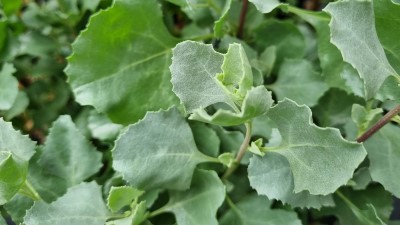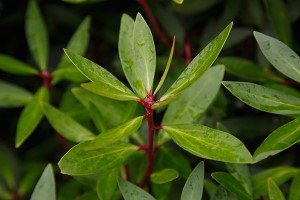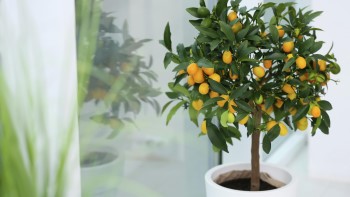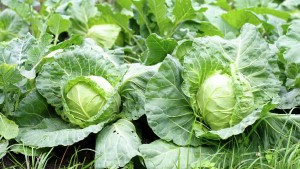- Houseplants
- 2,350
Old man saltbush is a hardy, drought-tolerant shrub native to parts of Australia, South Africa, and South America. It is used in many parts of the world as a source of food and medicine, and its wood is often used for fuel. This shrub is a great choice for gardeners who want to add a touch of color and texture to their landscape.
Here at Garden Pie, we shall look into how to cultivate, grow and care for old man saltbush.
Table of contents [Show]
- 1 What you need to know about old man saltbush
- 2 Appearance and characteristics of old man saltbush
- 3 How to use old man saltbush ?
- 4 How to grow old man saltbush ?
- 5 Caring for old man saltbush
- 6 How often should you water and feed old man saltbush ?
- 7 How and when to prune old man saltbush ?
- 8 Diseases and pests that affect old man saltbush
What you need to know about old man saltbush
Old man saltbush is a hardy, drought-tolerant shrub native to parts of Australia, South Africa, and South America. It is used in many parts of the world as a source of food and medicine, and its wood is often used for fuel. This shrub is a great choice for gardeners who want to add a touch of color and texture to their landscape.
It is a member of the Chenopodiaceae family, and is closely related to other saltbush species such as Atriplex halimus and Atriplex littoralis.
They can reach up to 7 feet in height and spread 6 feet wide. It has an upright, spreading habit, with its branches and leaves radiating out from a central stem. Its leaves are oval and silvery in color, and they have a unique salt-like taste that gives the shrub its common name. The flowers are yellow in color and appear in the spring.
It is a great choice for low-maintenance landscaping projects. It is drought-tolerant, meaning it can survive with very little water, and it can thrive in a wide range of soil types. It is also very hardy and can handle cold temperatures and windy conditions.
Because of its unique salt-like taste, old man saltbush is often used in cooking. Its leaves can be used to add flavor to salads, soups, and stews. The leaves can also be dried and ground into a powder that can be used as a seasoning for meats, vegetables, and fish.
It is also a popular medicinal plant. Its leaves are used to make teas and tinctures that are believed to help with digestion, inflammation, and other ailments. Its wood is also used for making charcoal, which is believed to have antiseptic properties.
No matter what you're looking for in a landscape shrub, old man saltbush is an excellent choice. This hardy, drought-tolerant shrub can add color and texture to any garden, and it's an excellent source of food and medicine.
Facts about old man saltbush includes:
- Name: old man saltbush, saltbush, purngep (Atriplex nummularia).
- Height: 1–3m.
- Plant type: perennial woody shrub.
- Climate: cool and warm temperate, arid and sub-tropical.
- Soil: prefers well-drained, but is tolerant of most soil types.
- Position: full sun to part shade.
- Foliage: silver-grey, elliptical to circular-shaped with wavy margins.
- Flowering and fruiting: small flowers, with male and female flowers borne on separate plants. Female flowers form dense clusters approximately 20cm long, while male flowers are globular and crowded along or on the ends of branches.
- Feeding: not required, but will benefit from an annual dressing of a slow-release fertilizer formulated for native plants.
- Watering: water regularly until well established.
Appearance and characteristics of old man saltbush
- Old man saltbush (Atriplex nummularia) is a hardy, drought-tolerant shrub found throughout much of Australia.
- It is a hardy evergreen shrub which have a silvery-grey foliage and a round, dense shape. It is a very drought-tolerant species, capable of surviving in arid conditions with little water.
- It has long, linear leaves that are a deep green color. The leaves are covered in a waxy coating which helps the plant retain moisture in dry conditions.
- The plant also produces small, yellow flowers in the summer months.
- It is an ideal plant for use in xeriscaping, as it is easy to maintain and drought-tolerant. It can also be used as a windbreak or as an ornamental plant in the garden.
- In terms of its characteristics, the old man saltbush is a low-maintenance plant that requires little care. It is tolerant of a wide range of soil types, and can grow in both full sun and partial shade. It is not particularly prone to pests or diseases, and can survive in areas that are prone to drought.
- It is well suited to dry conditions. It is an ideal choice for those looking to add a native shrub to their garden or landscape.
How to use old man saltbush ?
As previously stated Old man saltbush (Atriplex nummularia) is a hardy species that can tolerate extreme temperatures and low levels of moisture, making it an ideal plant for xeriscaping and drought-tolerant landscaping. With its silvery foliage and yellow-green flowers, old man saltbush adds an attractive touch to any garden thereby providing a backdrop for other flowering plants
Basically, Old man saltbush is an excellent choice for hedges, windbreaks, and erosion control.
This shrub provides excellent ground cover.
How to grow old man saltbush ?
Old man saltbush (Atriplex nummularia) is a popular choice for gardens, as it is drought-tolerant, hardy and requires minimal maintenance. It is also useful for erosion control and for providing shelter for wildlife. If you are looking to add this attractive shrub to your garden, here are some tips on how to grow old man saltbush.
- Choose a location. Old man saltbush prefers full sun and well-drained soil. It is a hardy plant and will tolerate a variety of soil types, but it will grow best in a sunny, open location.
- Prepare the soil. Before planting, it is important to prepare the soil. Remove any weeds and loosen the soil with a rake or tiller. If your soil is poor in nutrients, you can add a layer of compost or manure to improve the soil fertility.
- Plant the shrub. Plant the old man saltbush in the prepared soil. Plant each shrub about two feet apart. Water the plants thoroughly after planting.
- Mulch. Mulching is an important step for old man saltbush. Spread a 2-3 inch layer of mulch around the base of the shrubs. This will help keep the soil moist and prevent weeds from emerging.
- Water. Old man saltbush is a drought-tolerant plant, but it will need regular watering. Water the shrubs regularly to keep the soil moist.
- Prune. Pruning is not necessary for old man saltbush, but it can be done to maintain a neat, attractive shape. Prune back any dead or damaged branches and remove any suckers that appear at the base of the shrub.
Old man saltbush is an attractive, low-maintenance shrub that will add beauty and texture to any garden. With proper care and maintenance, it will thrive for years to come.
Caring for old man saltbush
To ensure its longevity, proper care is essential for its survival and health.
- It's important to consider its water needs. As a drought-tolerant species, it is adapted to growing in arid climates. While it can tolerate periods of drought, it will benefit from regular irrigation in hotter months. Aim to water the shrub once a week, or more frequently during particularly hot weather.
- In terms of sunlight requirements, it prefers full to partial sunshine exposure. It is not a shade tolerant species and will not thrive in areas that are too shady.
- It is not a fussy plant when it comes to soil types. It will grow in almost any type of soil, as long as it is well-draining. It is especially well-suited to sandy soils and clay soils.
- Fertilizing is not necessary for old man saltbush, as it will thrive without additional nutrients. However, if you wish to fertilize, do so sparingly with a balanced fertilizer in the spring.
- Pruning is also not necessary for this species, though you may wish to trim it back if it becomes too large or overgrown. Pruning can be done in the spring or summer months. It's important to ensure you use sharp pruning shears to avoid damaging the plant.
- It is relatively pest-resistant and low-maintenance, but it is not completely immune to disease. Check your plant regularly for signs of disease, such as yellowing leaves or wilting stems. If you notice any signs of disease, treat the plant with a fungicide or other appropriate treatment.
- Overall, caring for old man saltbush is relatively straightforward. It is a hardy species that will thrive with minimal effort.
- With regular watering and a bit of pruning, you can enjoy this beautiful shrub in your landscape for many years to come.
How often should you water and feed old man saltbush ?
- When it comes to watering, old man saltbush is a hardy plant that does not require frequent watering. In fact, it is best to err on the side of underwatering this shrub as it is drought-tolerant and can handle periods of dryness. In general, you should water old man saltbush once every few weeks or so, depending on the area's climate and soil conditions. During periods of extreme heat, you may need to water more frequently.
- When it comes to feeding, it only needs occasional fertilizing to keep it looking its best. The best time to fertilize is in the spring, just before the plant begins to show new growth.
- A slow-release fertilizer is best, as it will slowly release nutrients into the soil over a longer period of time and provide a steady supply of nutrients for the plant.
- In general, it is a low-maintenance shrub that does not require a lot of care or attention. With proper watering, occasional fertilizing, and regular pruning, this attractive shrub will thrive in your landscape.
How and when to prune old man saltbush ?
Pruning old man saltbush is an important part of maintaining the health and vigor of this hardy Australian native shrub. Pruning should be done at the right time and in the correct manner to ensure that the bush remains healthy and produces the desired shape and size.
It is best to prune your old man saltbush in late winter or early spring, just before new growth begins. This will ensure that you don't damage the woody stems which are just starting to form buds.
When pruning old man saltbush you should use sharp pruning shears or secateurs. Start by removing any dead, diseased or damaged branches. You can also remove any branches that are growing in the wrong direction or are crossing over one another. You should also remove any shoots that are growing too close together as this can cause the bush to become overcrowded and reduce air flow.
After pruning, you should also thin out any overcrowded branches to allow more air and light to reach the centre of the bush. This will promote healthy growth and help to prevent the spread of diseases and pests.
When pruning, it is important to remember that old man saltbush is a slow-growing shrub, so you should avoid removing more than one-third of the bush's foliage each year. This will help to ensure that the bush remains healthy and vigorous.
By pruning at the right time and in the correct manner you can ensure that your bush remains healthy and produces the desired shape and size.
Diseases and pests that affect old man saltbush
Unfortunately, old man saltbush is susceptible to a variety of diseases and pests that can negatively affect its growth and health.
It is susceptible to a variety of fungal diseases that can cause severe damage to the plant. Alternaria leaf spot is a fungal disease caused by the fungus Alternaria alternata, which is most commonly found in warm, moist environments. This disease causes yellow spots on the leaves of the plant, which eventually turn brown and result in leaf drop. Other fungal diseases that can affect old man saltbush include powdery mildew, rust and leaf blight. All of these diseases can be treated with fungicides, but it's important to identify the disease before attempting treatment.
It is also susceptible to a variety of insect pests, which can cause significant damage to the plant. Aphids are small, soft-bodied insects that feed on the sap of the plant, resulting in stunted growth and deformed leaves. Caterpillars are another common pest of old man saltbush, and they can cause severe defoliation of the plant. In extreme cases, caterpillars can completely defoliate the plant, resulting in death. Other pests of old man saltbush include mites, whitefly and mealybugs. All of these pests can be treated with insecticides, but it's important to identify the pest before attempting treatment.
To protect it from diseases and pests, it is important to practice good cultural practices, such as planting in well-drained soils and providing adequate air circulation. It is also important to inspect the plant regularly for signs of disease or pest infestation, and to promptly treat any problems that are identified. By taking these preventive measures, you can help ensure the health and vigour of your old man saltbush for years to come.
Conclusion
This guide covers how to care and a few steps you can take to ensure your old man saltbush stays healthy. In fact, Old man saltbush is a hardy plant that can survive in harsh conditions, making it a great choice for those looking to add a bit of greenery to their garden.
Here are 15 ways to care for old man saltbush:
- Plant your old man saltbush in a sunny location. It prefers full sun and well-draining soil.
- Water your plant regularly. It should receive 1-2 inches of water per week during the growing season and less in the winter.
- Apply a layer of mulch around your old man saltbush to help retain moisture and keep weeds away.
- Fertilize your old man saltbush every 6-8 weeks with a balanced fertilizer to help promote growth and blooms.
- Prune your old man saltbush to maintain its shape and size. Cut back any dead or overgrown branches.
- Check for pests and diseases on a regular basis and take action as needed.
- Plant companion plants around your old man saltbush to create a more attractive landscape.
- Protect your old man saltbush from extreme temperatures. It can't tolerate temperatures below 20°F (7°C).
- Move your old man saltbush indoors during harsh winter weather.
- Divide your old man saltbush every 3-4 years to promote healthy growth and blooming.
- Deadhead the flowers to encourage new blooms and reduce the possibility of disease.
- Plant old man saltbush in raised beds if you have drainage issues.
- Plant old man saltbush in containers if you don't have enough space in your garden.
- Plant it in a wind-sheltered spot to prevent damage from high winds.
- Add a layer of compost around the base of your plant to give it a nutrient boost.
By following these simple steps, you'll be able to keep your old man saltbush looking great for years to come.





